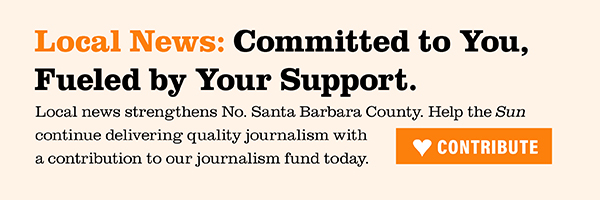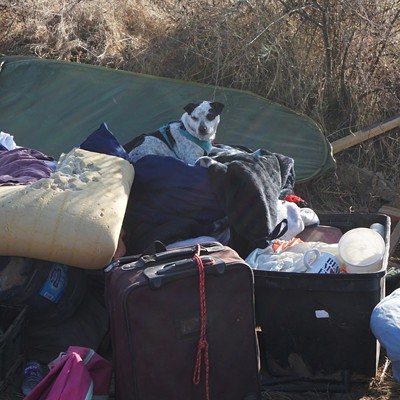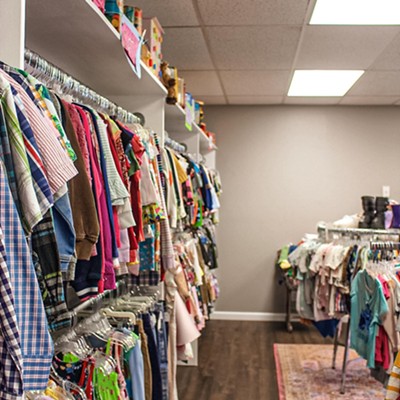Santa Barbara County has one of the highest poverty rates in California. A new report recently released by the nonprofit think tank Public Policy Institute of California shows the Central Coast municipality's 23 percent poverty rate trailed only Los Angeles (24.3) and Santa Cruz (23.8) counties.
Likewise, childhood poverty was found to be equally dismal in all three of the aforementioned counties: Los Angeles (27.8) and Santa Cruz (27.2) again outpaced Santa Barbara County (26.3), but only barely.
It's a problem the county and cities like Santa Maria can trace back for years and an issue government officials and nonprofit organizations have attempted to combat through monitoring, along with funding social and affordable housing programs.
Santa Maria's Public Information Officer Mark van de Kamp told the Sun the city's Special Projects Division released an annual "action plan," which focussed on alleviating some of the social issues such as homelessness and access to vital health services.
"The program seeks to expand educational and youth development opportunities, and to develop and support programs to increase the supply of affordable housing for low and moderate income households, particularly people living in poverty," he added.
A 2013 report conducted by Santa Barbara County assessing the region said the 2007-10 Recession resulted in a 52 percent increase in residents living below the federal poverty thresholds and a 61 percent increase in child poverty in Santa Barbara County.
"Yet, just as the community need for human service programs grew, state and federal budget deficits resulted in deep cuts in human services programs," the report's authors wrote. "These cuts have strained the public and nonprofit safety net infrastructure, leaving Santa Barbara County's most vulnerable community members without adequate resources to make ends meet."
The report identified four cities as high poverty areas: Santa Barbara, Santa Maria, Lompoc, and Isla Vista.
Although Guadalupe and Carpinteria did not meet the 20 percent high poverty threshold used in the report, "they have significant numbers of residents struggling economically and display other indications of financial distress (e.g. high rates of benefits usage, overcrowding, and uninsurance)," its authors added. "It is also important to note that undocumented workers are not counted in official statistics, so the poverty rates in certain areas are likely to be higher than portrayed."
All of the identified cities have relatively high homeless populations, compared to surrounding areas. The 2017 Report on Homelessness in Santa Barbara County found sheltered and unsheltered populations had remained "remarkably consistent in Santa Barbara County over the past six years (1,536 in 2011 vs. 1,489 in 2017)."
The largest increases in counted homeless people were observed in Lompoc, Goleta, and Isla Vista, but Santa Maria still had a fairly large population of homeless (338), or roughly 40 percent more than in 2011 (less than 250).
The high level of poverty makes for a tough reality for some cities like Lompoc and Santa Maria, communities that have struggled to rein in their spending due to skyrocketing state pensions and unstable economic conditions over the past decade.
For instance, Santa Maria balanced its budget for the next two fiscal years in June, but that equilibrium came at the cost of millions of dollars in reserve funds. Officials said the move was necessary given the city's growing pension payout obligations, which saw a spike of nearly $4 million in California Public Employees' Retirement System (CalPERS) costs compared to just a half decade ago.
Even though the pension problems have been successfully staved off for a couple more years, Santa Maria, like many West Coast cities, must deal with the cost of homelessness and poorer populaces.
"In many instances, it costs more to maintain a homeless individual than to solve the problem," a spokesperson for Santa Barbara County's Department of Behavioral Wellness told the Sun.
The annual cost of criminal justice, health care, and other services for a homeless person ranges between $35,000 and $150,000, according to the U.S. Interagency Council on Homelessness.
It's why California and its cities have tried to address one of the most prevalent issues statewide, a lack of affordable housing. Most recently, local nonprofit People's Self-Help Housing opened its third low-income apartment complex in Santa Maria on July 27, which will house 34 farmworker families.
The Public Policy of California (PPIC) report issued in July found that more than 14 percent of Californians lacked enough resources, or around $24,000 a year for a family of four, to meet basic needs in 2016. It should be noted that the official poverty line does not account for the state's housing costs or other critical family expenses and resources.
Nearly one in five Californians were found to not be living in poverty but still "lived fairly close to the poverty line," and at least two-fifths (more than 38 percent) of state residents were declared "poor" or "near poor" in 2016.
Moreover, the report's authors said poverty statewide is higher once key family needs and resources were factored in.
The California Poverty Measure (CPM), a joint research effort by PPIC and the Stanford Center on Poverty and Inequality, is a more comprehensive approach to gauging poverty in California. It accounts for the cost of living and a range of family needs and resources, including social safety net benefits.
According to the CPM, 19.4 percent of Californians (about 7.4 million) lacked enough resources to meet basic needs in 2016–about $31,000 per year for a family of four, nearly $7,000 higher than the official poverty line. Poverty was highest among children (21.3 percent). The overall poverty rate went unchanged between 2015 and 2016–following two years of decreases.
"The picture of poverty is quite different than what you might expect based on the 1960s-era official poverty estimates," PPIC researcher Sarah Bohn said in the report. "It tends to be higher on the coast, and some of that's driven by the high cost of living, but also by the fact that in some of those places families are working and less eligible for social safety net programs that boost their income."
Staff Writer Spencer Cole can be reached at [email protected].










